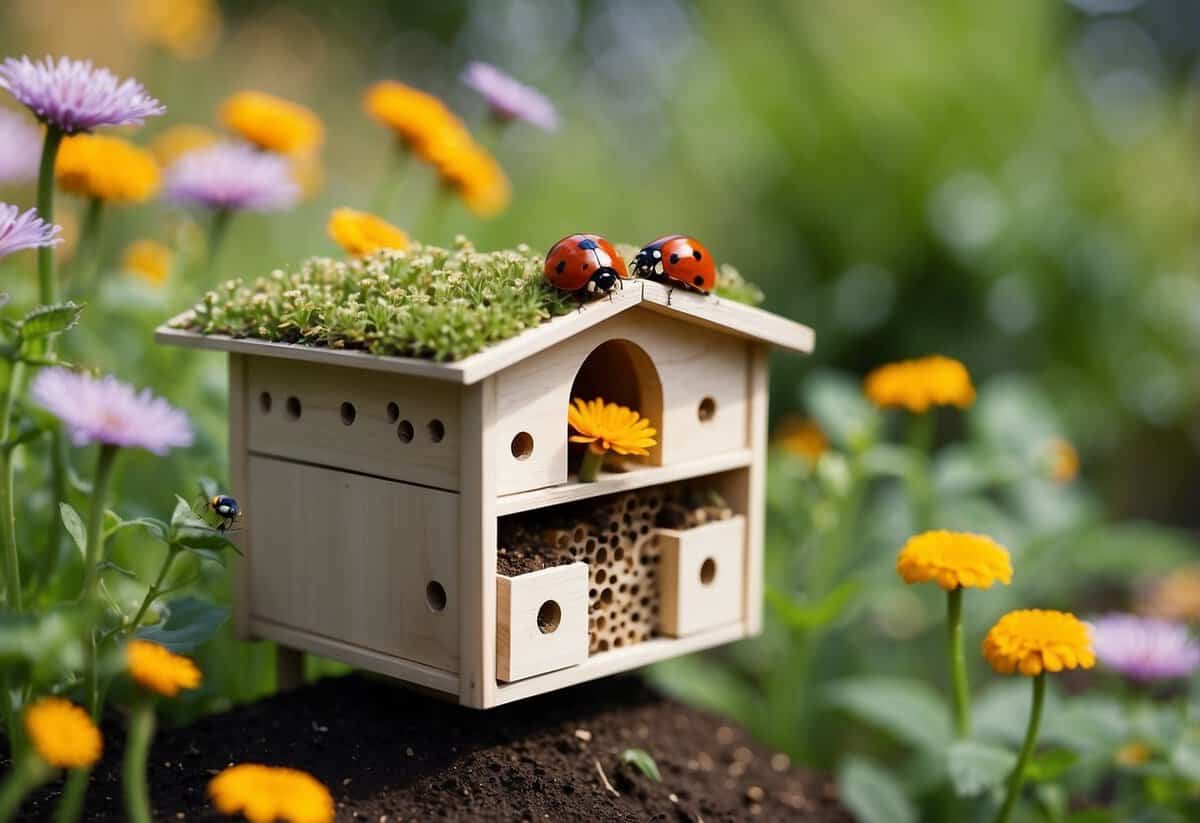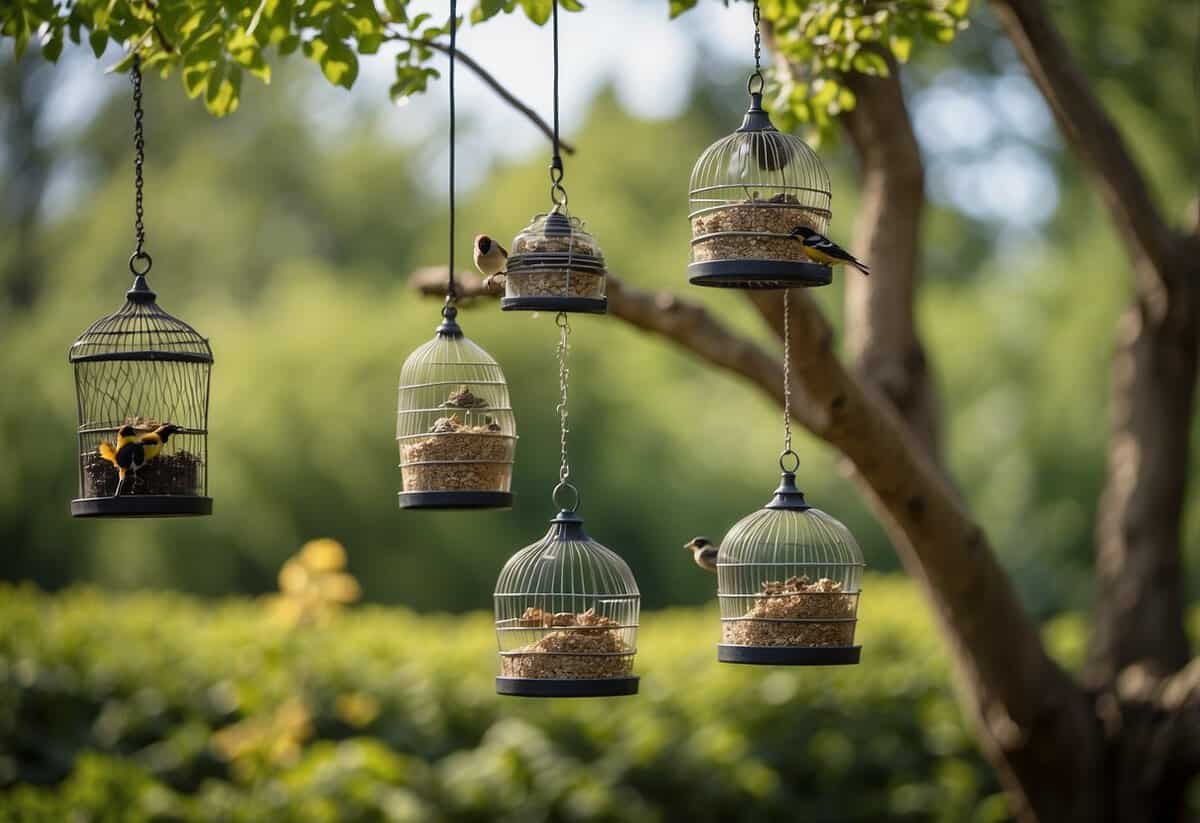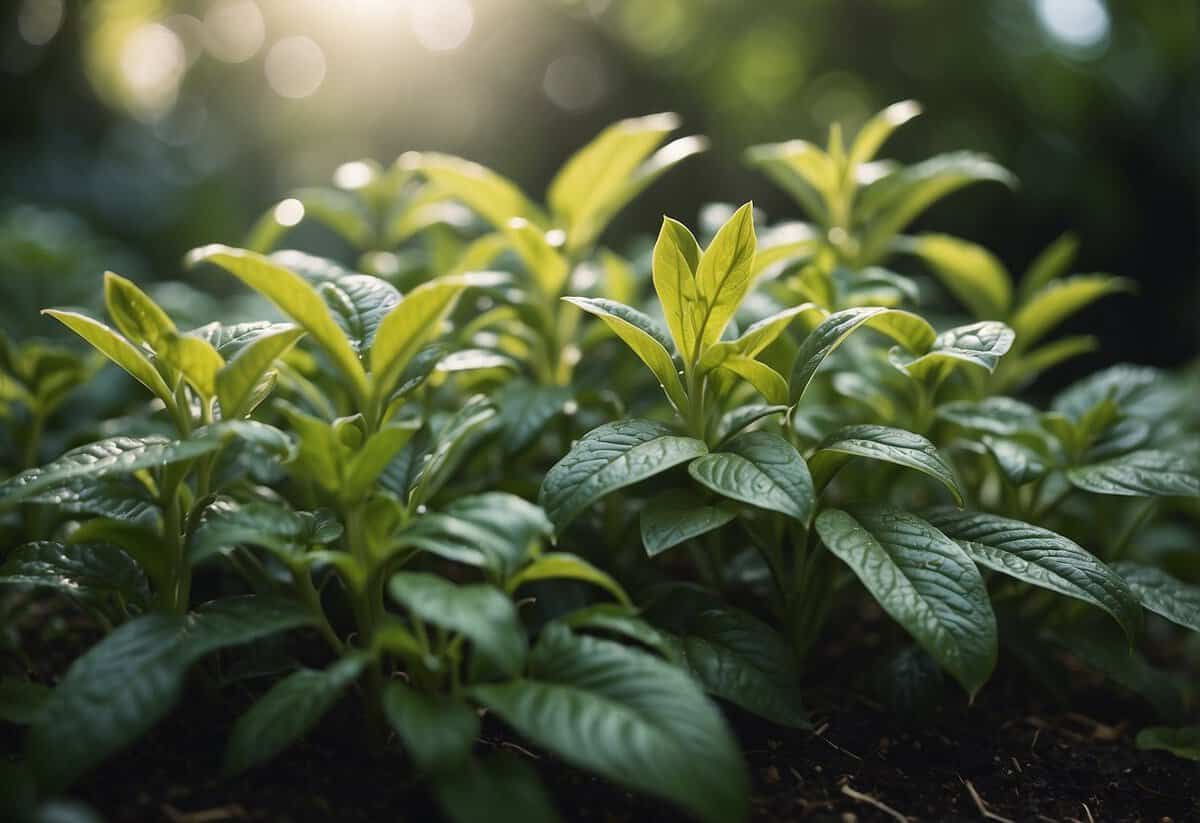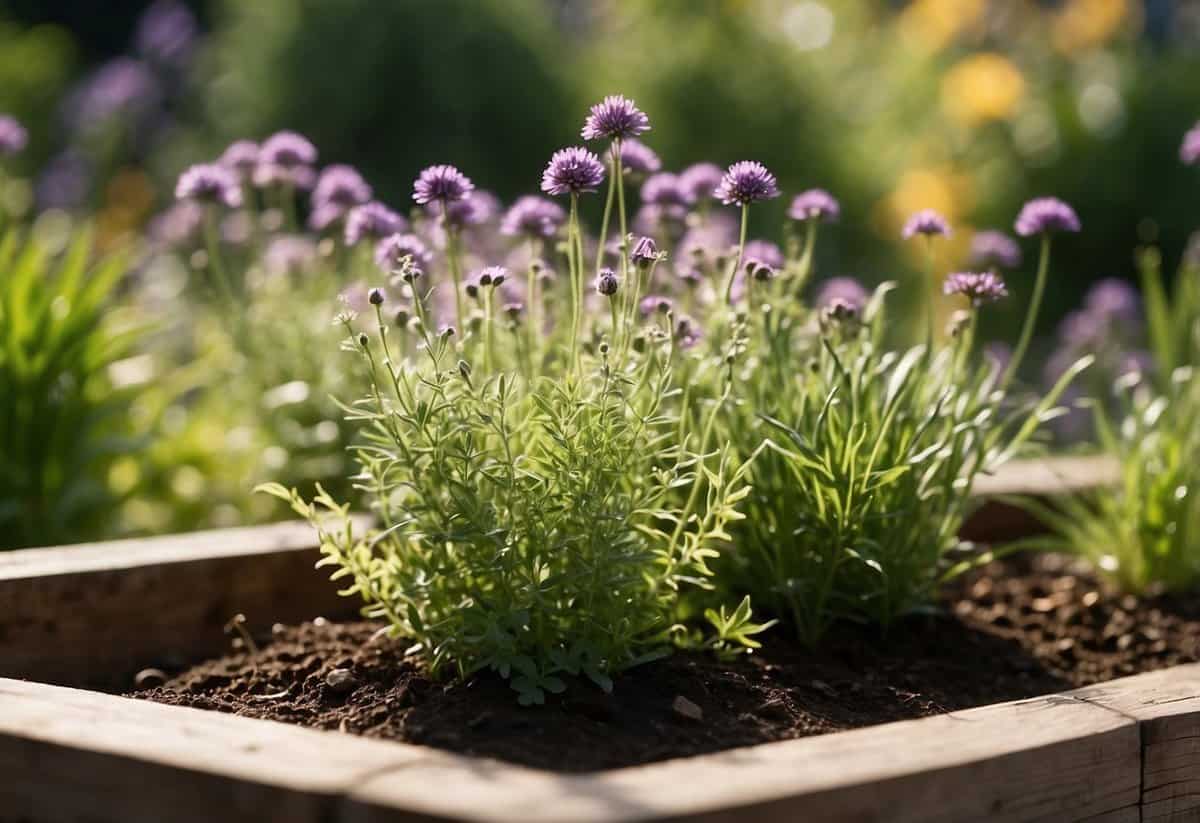Garden Tips for Bugs: Keeping Your Plants Safe and Thriving
Gardening can be a rewarding hobby, but dealing with bugs can sometimes feel overwhelming. From small insects to larger pests, these creatures can threaten the health and beauty of your garden. How can you keep your garden safe from bugs while maintaining a healthy ecosystem?

We’ll explore various tips and tricks to help you manage those pesky intruders. With the right strategies, you’ll be able to enjoy a thriving garden teeming with healthy plants and flowers, free from bothersome bugs.
1) Introduce Beneficial Insects

Your garden is already home to many helpful insects. These insects eat pests that can damage plants. By attracting these bugs, you create a natural defense system.
Ladybugs are great for eating aphids. You can attract them by planting dill or fennel.
Pollinators like bees and butterflies help your plants reproduce. To invite them, plant flowers like sunflowers and zinnias.
There are also beetles like soldier beetles that eat harmful insects like grasshopper eggs. Plant goldenrod and marigolds to bring them in.
By inviting these beneficial insects, you help your garden thrive.
2) Use Neem Oil for Pesticides

Neem oil is a natural way to keep pests off your plants. It’s safe for the environment and easy to use.
First, mix 1 to 2 teaspoons of dish detergent into 1 gallon of warm water. This helps the neem oil mix well with the water.
Spray the neem oil on your plants at dusk or before sunrise. Make sure to cover all parts, including the undersides of the leaves, where pests often hide and lay eggs.
Before treating the whole plant, test a small area to ensure your plants don’t get damaged.
Learn more about using neem oil for pests.
3) Plant Marigolds to Repel Pests

Marigolds are great for keeping pests away from your garden. They have a strong scent that repels insects like mosquitoes, thrips, and aphids.
Planting marigolds around your garden’s perimeter creates a natural barrier. They can also deter root-knot nematodes underground by releasing chemicals from their roots.
For best results, choose scented marigold varieties and make sure they get full sun. Keep the soil slightly dry and remove faded blooms to encourage new flowers. Enjoy a pest-free and vibrant garden by using marigolds.
4) Attract Birds with Birdfeeders

Set up a birdfeeder in your yard. Birds eat insects and can control pest populations.
Use a quality seed blend to attract different bird species. Chickadees, grosbeaks, and sparrows love seeds.
Try non-melting suet cakes to attract birds that eat insects, like titmice and woodpeckers. Birds appreciate these high-energy treats!
Consider placing a water source nearby, like a birdbath, for drinking and bathing. This will make your yard an even more inviting space for birds.
Adding feeders and water will bring more bug-eating birds to your garden.
5) Create a Bug Hotel

A bug hotel is a great way to attract helpful insects to your garden. Use natural materials like leaves, twigs, and bark. You can also add logs, sticks, and straw for variety.
Place the bug hotel in a shaded, warm area of your garden. Make sure it’s protected from strong winds and heavy rain.
Drill small holes in logs to provide homes for solitary bees. Fill the hotel with layers of natural materials, creating plenty of hiding spots for different insects. By doing this, you encourage pollinators and pest controllers to stay in your garden.
6) Use Diatomaceous Earth

Diatomaceous earth (DE) is an effective, natural pest control for your garden. It can tackle pests like slugs, aphids, and beetles.
To apply, dust a light layer around the base of your plants. Ensure the DE forms a continuous barrier. Avoid long sentences or complicated instructions.
Reapply DE after rain, as moisture reduces its effectiveness. Always use food-grade DE to ensure it’s safe for your garden. This versatile product can help keep your garden healthy and pest-free.
7) Apply Companion Planting

Companion planting is a great way to reduce pests in your garden naturally. By placing certain plants near each other, you can repel insects that might harm your crops.
For example, planting basil near tomatoes can help keep away harmful insects like tomato hornworms. Similarly, marigolds paired with peppers can deter aphids.
Using herbs like parsley and rosemary can also protect against caterpillars and other bugs. Give companion planting a try to enjoy a healthier, more vibrant garden!
8) Install a Bug-Repelling Fence

A bug-repelling fence helps keep unwanted insects out of your garden. Choose fine mesh or netting material to block small bugs from entering.
Ensure the fence is tall enough to keep pests from flying over it. Installing the fence securely at the ground level will prevent crawling insects from sneaking through.
This method acts as a physical barrier and is effective without using chemicals. By keeping insects out, your plants can grow healthier and stronger.
9) Opt for Natural Predators

Inviting natural predators is a great way to keep harmful bugs in check. These insects, like ladybugs and lacewings, eat pests that damage your plants.
Plant native flowers to attract these helpful insects. They thrive on pollen and nectar when prey is scarce.
Keep a shallow dish of wet sand or mud. Some insects, like butterflies, need this for moisture and nutrients. Removing debris and dead foliage also discourages harmful pests from hiding in your garden.
10) Set Up DIY Traps

Making your own bug traps can be simple and cost-effective.
For a wasp trap, you can turn a plastic bottle into a funnel-shaped trap. Cut off the bottle’s top and insert it upside down into the bottom. Use string to hang it up. You can learn more about this method here.
A sticky bug trap can be made by applying a sticky substance to a yellow object. Insects are drawn to yellow and will get stuck. For detailed instructions, visit this page.
Common Garden Pests

Garden pests can wreak havoc on your beautiful plants. Learn how to spot these common bugs and understand how they affect your garden.
Identifying Common Bugs
Pests come in many shapes and sizes. Caterpillars are common culprits; they munch on leaves, stems, and fruits. You’ll often find them hidden under leaves. Slugs and snails are another nuisance. Active mainly at night, they leave a slimy trail and feed on various plants, hiding under rocks or debris during the day.
Aphids are small, green insects that suck the sap from plants. You can spot them in clusters. Flea beetles are tiny, dark beetles that jump like fleas and chew small holes in leaves. Knowing how to identify these pests can help you take action quickly.
Impact of Pests on Plants
Bugs can cause significant damage to your plants. Caterpillars can strip a plant of its leaves, affecting its growth and health. Slugs and snails often create unsightly holes in leaves and sometimes even chew off young seedlings. This can stunt a plant’s development.
Aphids are notorious for their ability to weaken plants by sucking their juices. They can also transmit diseases. Flea beetles, with their feeding habits, make plants look spotty and unhealthy, but the biggest risk is to seedlings, which can be severely damaged by even a small infestation. Recognizing the damage these pests cause helps in managing your garden effectively.
Natural Pest Control Methods

Controlling pests naturally in your garden can be both eco-friendly and effective. Beneficial insects and homemade remedies are key ways to manage pests without harsh chemicals.
Using Beneficial Insects
Beneficial insects like ladybugs, lacewings, and parasitic wasps can help control pest populations. Ladybugs eat aphids, mites, and other small insects that harm plants. You can attract ladybugs by planting dill, fennel, or marigolds.
Lacewings are another helpful insect. Their larvae eat aphids, caterpillars, and other pests. To draw lacewings to your garden, plant flowers like cosmos and sunflower. Parasitic wasps are tiny but mighty. They lay eggs inside pests like caterpillars and aphids, eventually killing them.
You can buy these insects from garden supply stores or online. Release them in your garden early in the morning or late in the evening.
Homemade Remedies
Homemade remedies are another great way to manage pests. A simple vegetable oil spray can be made by mixing 1 cup of vegetable oil with 1 tablespoon of mild soap. Add this mixture to a quart of water and spray on your plants to suffocate insects.
Soap spray is effective for soft-bodied insects like aphids. Mix 1 tablespoon of mild liquid soap with 1 quart of water. Spray on your plants, but avoid doing this during the heat of the day to prevent plant damage.
Neem oil spray is another natural option. Neem oil disrupts insect growth and reproduction. Mix 2 teaspoons of neem oil with 1 teaspoon of mild soap and 1 quart of water. This can manage a wide range of pests.
Using garlic spray can also deter pests. Crush several garlic cloves, mix them with water, and let it sit overnight. Strain and spray it on plants to repel insects.
These remedies are safe and simple, allowing you to protect your garden without harmful chemicals.
Prevention Tips

Keeping your garden free of pests involves regular garden maintenance and smart planting techniques. Both efforts help create a healthy environment that deters bugs.
Garden Maintenance
Regular garden maintenance is crucial for pest prevention. Start by keeping your garden clean. Remove dead leaves and debris, which can attract pests. Mulching can also help. Use organic mulch to keep soil healthy and moist, which makes it harder for pests to settle in.
Watering your plants properly is also important. Overwatering can create a breeding ground for mosquitoes and other pests. Water early in the day so the soil dries out by evening. This discourages pests from sticking around.
Consider using insecticidal soap or oil sprays. For instance, insecticidal soap made from castile soap and water can be sprayed on leaves every few days to deter bugs.
Planting Techniques
Smart planting techniques can significantly reduce pest infestations. One effective strategy is companion planting. Some plants can repel pests and protect others. For example, plant marigolds alongside tomatoes to keep away nematodes.
Rotate your crops each year. This prevents pests from getting comfortable in one spot. Avoid planting the same type of plant in the same place year after year.
Using row covers can also be beneficial. These covers physically block bugs from reaching your plants. For instance, row covers prevent bugs from moving between rows, protecting your plants.
Lastly, introduce beneficial insects like ladybugs and lacewings. These insects prey on garden pests, creating a natural defense. Encourage them by planting flowers that attract them, such as daisies and yarrow.







